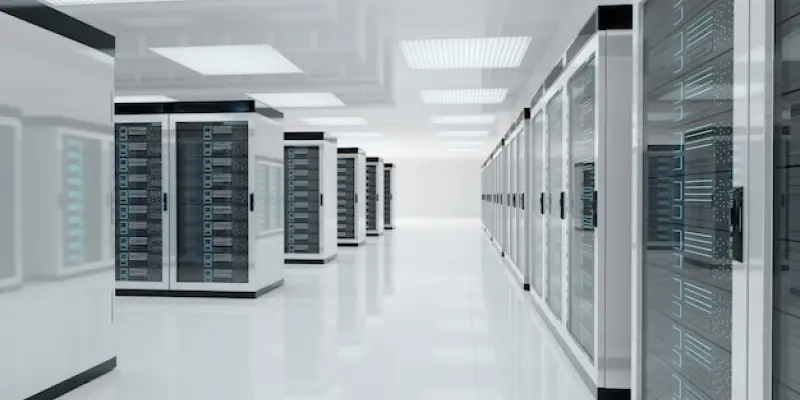The substantial shift in how data centers approach cooling has become increasingly apparent as the demand for advanced technologies, such as artificial intelligence and high-performance computing, continues to escalate. Data centers are the backbone of modern digital infrastructure, yet their capacity to handle the immense power density required to drive contemporary applications is hampered by traditional cooling methods. Air-based cooling systems have long served in regulating device temperatures; however, they are reaching their limit, especially with power-intensive operations becoming more commonplace. In response to these challenges, liquid cooling technologies are emerging as pivotal solutions that not only enhance energy efficiency but also adapt to the growing complexities of today’s digital age.
The Promise of Liquid Cooling Technology
As the industry seeks solutions to the constraints of air cooling, liquid cooling presents a promising alternative capable of managing higher power densities associated with emerging tech demands. It offers enhanced thermal management, leveraging the superior heat transfer properties of liquids compared to air. Direct-to-chip and immersion cooling systems are at the forefront of this evolution, each providing distinct advantages. Direct-to-chip cooling utilizes cold plates attached to elements like CPUs and GPUs, allowing concentrated heat to efficiently transfer away from the source. This system ensures components operate within optimal temperature ranges, preserving performance and extending hardware longevity. Immersion cooling, on the other hand, takes a more comprehensive approach by submerging entire IT components in dielectric fluids renowned for their effective cooling properties. This method supports even higher power densities, facilitating robust processing performances for sophisticated applications. Both approaches underline the rising necessity for innovative cooling capabilities, promising an increase in energy efficiency and operational reliability, and opening avenues for further technological advancements in data center management.
Market Dynamics and Environmental Considerations
The growing applicability of liquid cooling is mirrored in market predictions, with its revenue forecasted to reach about $2 billion in just two years. This anticipated growth stems from the marked push towards more energy-efficient solutions conducive to sustaining monumental computing tasks. For data centers, embracing liquid cooling aligns smoothly with the ongoing trend of minimizing environmental footprints. These facilities, which already account for a significant portion of electricity consumption, face tremendous pressure to adopt sustainable practices, as projected electricity usage is set to rise.
Besides optimizing energy use, liquid cooling plays a critical role in sustainable water management. Many solutions in this category employ closed-loop systems where water is recycled rather than consumed anew. Innovations such as utilizing non-potable greywater or harvesting rainwater are becoming practical implementations that support environmental conservation while maintaining operational efficiency. These steps are crucial as the industry pursues its goals detailed in sustainability frameworks and initiatives like the Carbon Neutral Data Center Pact.
Enhancing Sustainability Through Waste Heat Utilization
The focus on sustainability extends beyond mere water and energy efficiencies to the innovative utilization of waste heat generated by liquid cooling systems. There is a growing trend of repurposing this byproduct, pioneering how data centers contribute positively to surrounding communities. Collaboration with civil infrastructure and local authorities opens pathways to harvesting excess heat for practical uses such as district heating, thus redefining waste as a resource. By advancing solutions for energy recovery, data centers can significantly reduce their carbon footprint while fostering sustainable operations.
These endeavors reinforce the industry’s commitment to establishing liquid cooling as a leader in eco-conscious technology, setting new standards for resourcefulness and collaboration. Beyond mitigating the environmental impact, it prompts a broader dialogue on the future of liquid cooling, where operators continuously explore novel methods to integrate surplus heat into beneficial applications. These initiatives represent progressive strides towards reducing ecological burdens while advocating for resilient infrastructure that accommodates global digital needs.
Future Prospects and Strategic Integration
In the quest to overcome the limitations of air cooling, the tech industry increasingly turns to liquid cooling, which offers a compelling alternative for managing the higher power densities linked to new technologies. Leveraging the superior heat transfer properties of liquids, liquid cooling provides significantly better thermal management than traditional air cooling. Leading this transformation are direct-to-chip and immersion cooling systems, each with its unique benefits. Direct-to-chip involves attaching cold plates to crucial components like CPUs and GPUs, effectively dissipating concentrated heat from the source. This approach helps maintain components within ideal temperature ranges, securing performance and prolonging hardware life.
Conversely, immersion cooling submerges IT equipment in dielectric fluids known for excellent cooling abilities. This enables handling of higher power densities, ensuring vigorous processing capabilities for complex tasks. Both methods highlight the growing need for advanced cooling solutions, promising gains in energy efficiency and reliability while paving the way for further innovations in data center management.

